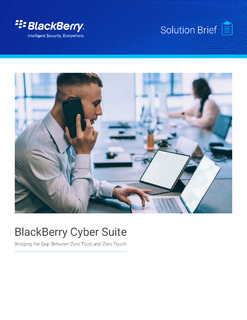The challenge of securing and protecting data and endpoints is not a new requirement, but today it is more important than ever. With a rapidly expanding attack surface created by the proliferation of new types of endpoints ranging from mobile to the Internet of Things (IoT) coupled with a wave of remote global workers, you’ve got a perfect storm. The concept and implementation of a Zero Trust framework has never been more important as securing and protecting endpoints and data goes hand in hand with Zero Trust.
Zero Trust was created to address de-perimeterization, or the erosion of the corporate network perimeter. With the consumerization of technology and the rise of cloud-based apps CISO’s had to change their approach to assume that no traffic within an organization’s network was any more trustworthy than traffic coming in from the outside. Zero Trust is all about establishing trust and limiting access. It is about ensuring you have a trusted user on a trusted device while limiting access to the data and apps needed for that person to do their job. Balancing the requirements of Zero Trust and worker productivity was hard enough before March 2020 when organizations moved their global workforce to a work-from-home model overnight. In turn, it has prioritized Zero Trust and business continuity to the top of the list of challenges that must be solved for.

